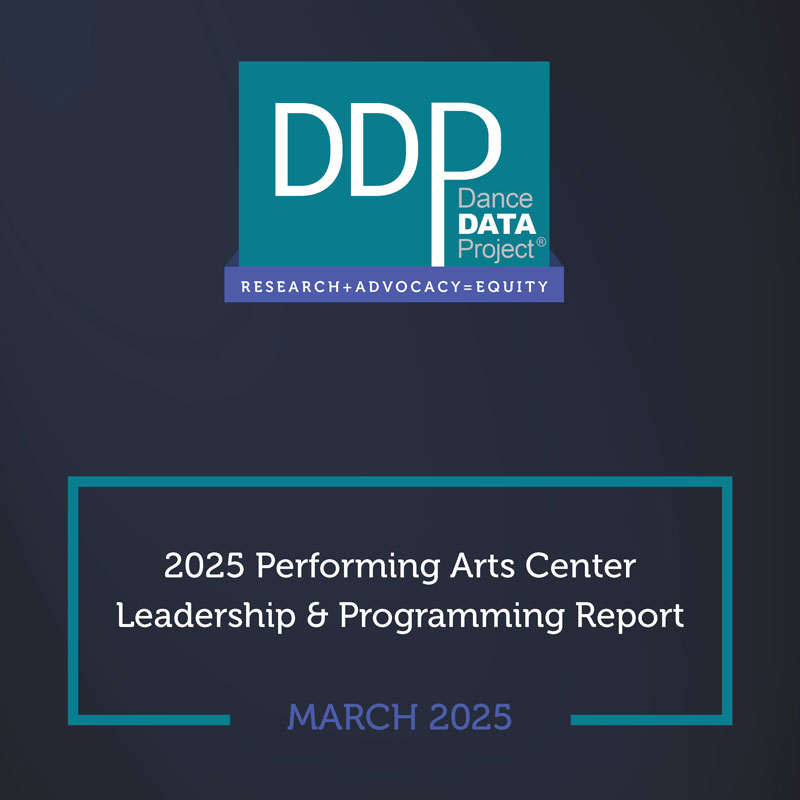This report is the last in the series of exams of the current sites, which began with the leadership and programming report of the 2020 dance hall, produced in collaboration with the Center for Equity, Gender, and Leadership (EGG) at the Haas School of Business of the UC Berkeley and led by the DDP Advisory Council and the former Chairman of the Board school. In this document, we document our latest discoveries on gender equity in the programming and leadership of the performing arts for the 2023/2024 season, revealing that if female dance works have formed a large part of the first village programs, women remain underrepresented in complete productions, the main places and leadership roles in 116 performance centers.
The DDP examined the ballet / programming of contemporary, contemporary and modern dance in 116 art centers. Of the 2,221 dance works presented, 31.4% were choreographed by women. Women choreographed 17.8% of the 891 total programs identified in the study, and 35.9% of these programs included mixed gender choreographers. A ventilation of programming by format highlights this disparity: women have choreographed 30.2% of complete works and 32.3% of mixed works. “This report serves both as a benchmark and a call for action – we can build a future where women's choreography is fully recognized and celebrated on the biggest stages in the world,” said Junyla Silmon, the main search consultant of the DDP. “At DDP, we are committed to extending the scope of our research to enter a more complete range of data. Our goal is to broaden this relationship in the world in future iterations. ”
A more in -depth examination of the first reveals notable differences in the representation: the works choreographed for women represented 40.9% of the total of the first, including 48.2% of the world's first, 25.0% of the first Americans, 12.9% of the first of the company and 32.7% of the first places. The striking contrast in the representation between the world's primary and the first of the business suggests that if women acquire visibility in new creations, they are less frequently included in works introduced in established companies.
DDP also examined the programming according to the number of dance works presented by Center. The centers which presented the greatest number of works (more than 25) included an average of 31.8% of the works choreographed by women. Those presenting an average number of works (11-25) programmed of 30.8% of works choreographed by women, while the centers with the least works (10 or less) have scheduled the lowest percentage, on average 28.9%. In particular, there were 13 centers which did not program a single choreographed work only or co-choreographed by women.
The study analyzed the size of the theater as a gender distribution factor. The most important theaters with a capacity of combined seats of 177,814, only programmed 22.2% of dance works by women. Average capacity theaters (75,665 seats in total) programmed 31.2% of the choreographed works for women, while the lowest theaters (20,241 seats in total) had the highest percentage at 39.8%. These results suggest that women's work is disproportionately relegated to smaller places, limiting their visibility and impact.
“Women still receive fewer opportunities on the biggest stages, which strengthens an inequitable cycle,” said Jenna Magrath, the DDP research department. “When large institutions fail to program the works of large -scale women, which decreases the chances of these choreographers to obtain commissions, funding and wider recognition.” The report also highlights the representation of the sexes in the roles of leadership within the art centers of the show. Of the 206 people identified in positions of executive and artistic director in 116 centers, only 92 (44.7%) were women. On the boards of directors, women represented 43.5% (1,287 of the 2,956 members of the board of directors). Although these figures indicate progress, the results show that gender parity remains elusive in the decision -making roles that influence programming choices.
“Despite a limited time, funding and resources, the DDP makes significant progress in the analysis of key data and the widening of our research to encompass a wider range of programs, including festivals, places and touring companies.” said the president and founder of the DDP, Elizabeth, “Liza” Yntema. “By offering this data, we hope to enlighten the obstacles facing women and ensure that the programming pipeline becomes more inclusive, rather than dominated by a narrow group of high -level male artists. For example: the Joyce Theater, under the direction of the Danni Gee programming director, various and inclusive prioritizes, creating choreographers opportunities. ”.


